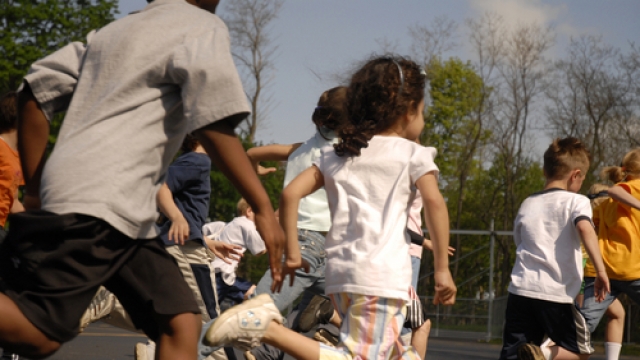There is nothing quite like a kid's excitement and the joy they feel when they get to run around. However, that release of energy is happening less for children who come from lower income communities. Across our country, low-income youth are participating less in physical fitness activities than those who come from more money. It's a concept that experts are calling "the physical divide."
"For the last decade plus, since 2007, some of the research is showing there has been a huge decline in youth sports," said Nhu Nguyen-Siedem, a physical education professor at Metropolitan State University Denver.
Nhu Nguyen-Siedem says there are a number of barriers that are creating this physical divide. One of the most prominent is cost.
"As we talk about youth club sports, those traveling teams, they range from $2,000 to $7,000 a season," said Nguyen-Siedem.
A common denominator for access to these physical activities could come from K-12 education putting all students on the same playing field. However, a recent report from the Physical Activity Alliance gave schools nationwide a grade D- for physical fitness. That's a decrease from their C- in 2014.
SEE MORE: Why exercise can help us survive COVID-19 and other diseases
Nguyen-Siedem says improvements are more likely to come, "the more that we can get to talking to lawmakers and decision makers about adding back in priority legislation so that money is also going to kids' movement."
Prioritizing funding for physical education programs on the governmental level is one solution. Another is partnering with boots-on-the-ground organizations. Nate Stahlecker is the Managing Director for Volo Sports in Denver.
"We are the largest social sports company in the U.S.," Stahlecker said. "And after the Freddy Gray incident happened years back, our leadership team got together and was like how do we give back to the community, how do we help solve this gap that's there ... and that's when the Volo Kids was founded."
Currently operating in Baltimore, Washington D.C., New York City, Boston, Denver, San Diego and San Francisco, Volo's Kids Foundation offers free youth athletic leagues that remove barriers to athletic participation.
"So I've been doing just a lot of outreach of letting parents and families and schools know this is an option in case they can't afford to drop thousands of dollars on club soccer or club rugby or trying a new sport," said Kenzie Williams with the Volo Kids Foundation.
As the kids program and outreach coordinator for the Volo Kids Foundation in Denver, Williams sees the impact every day.
"The growth and the confidence has been the coolest thing to see in kids," Williams said.
SEE MORE: Youth sports have positive impact on mental health, study says
They know cost isn't the only barrier. It's why they partner with a local nonprofit that provides transportation for the kids. Other hurdles that need to be recognized are language barriers and health.
"One of the things that came up in one of the more recent surveys is that families and students were worried about the risk for injury," said Nguyen-Siedem.
The more roadblocks kids face, the less access they have to the cognitive, social and emotional elements that come with participating in fitness activities.
"Teamwork is a skill that translates sports into your adult life," said Nguyen-Siedem. "I can't say enough for missing those components at an early age really puts them further behind."
Advocates say this is an issue that's been exacerbated by the pandemic. However, the gap will only get worse unless further change is implemented.
"So not only is it financial, it's health, it's pandemic, it's transportation, it's literacy, it's a number, a myriad of pieces that combine to create that widening gap between the have and have nots," said Nguyen-Siedem.
Trending stories at Scrippsnews.com




